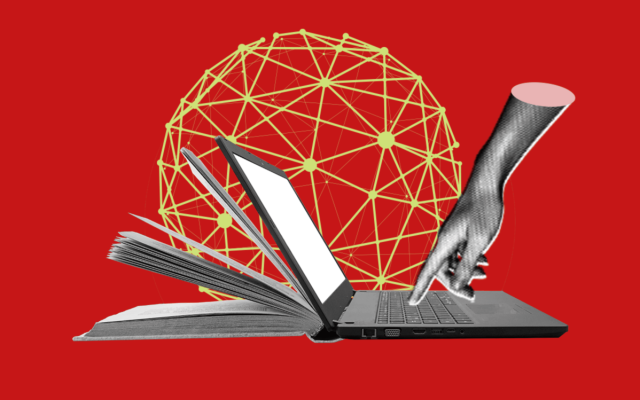Ambizione Italia for Cybersecurity: Job Talk with Penalist Giulia D’Andrea
It’s not just about breaking into personal devices, but also cyberstalking, revenge porn, and cyberterrorism… Whomever commits crimes with new technology has no qualms about damaging national security or harming the privacy and security of individuals. The confines of cybercrime continue expanding.
Giulia D’Andrea is a young criminal lawyer who is specialising in cybercrime. On July 13, at 5 pm, she will lead the job talk on “Cybercrime: A Threat that is Changing the World … and the Working World.” The meeting is organised as part of Programme Ambizione Italia for Cybersecurity with Microsoft Italia and will be introduced by Carlo Mauceli, National Digital Officer Microsoft Italia.
“After graduating from the University of Roma Tre, in 2017, I began working as a lawyer in Venice, studying various aspects of criminal law for my bar exam,” explains Giulia. “Then, I began working for the Association for the Defence and Orientation of Consumers (ADOC) as part of the “Informed Citizen, Safeguarded Citizen” project. There, I was able to focus on cybercrime and I held courses for high school students. The arrival of Covid completely changed the sector, giving me the opportunity to explore new challenges and case studies.”
In this interview with Onelia Onorati, our press officer, Giulia touches upon some of the topics that will be addressed in her job talk.
What type of cybercrime have you come across most often?
The diffusion of computer viruses and spamming. And cyberstalking is on the rise, too. There was a case of a former couple, but I have also come across cases of revenge porn. I have defended the victims of a criminal who hacked the devices of women, via e-mail, stealing their private photos and publishing them on a website with their personal contacts. In general, cybercrime includes computer fraud, falsification, and damaging data integrity on a device via viruses and phishing (data extorted via false links). A further type of crime is conducted with “dialers,” programmes that are written to connect users to a different line with an additional cost. Falsification concerns electronic documents that are altered materially or ideologically. Yet another “new” type of cybercrime concerns attacks via ransomware, like that which recently involved “libero.it”.
How is cybercrime developing?
Cyberterrorism, at the macro level, and cyberstalking, at the micro level. In particular, cyberterrorists will aim to provoke panic amongst populations to destabilise society for political, religious, and economic objectives.
How can we prevent the greatest cyber-risks?
A fundamental role is played by how informed and educated people are, followed by continuous monitoring and checks on one’s personal devices. One of the main causes of the diffusion of cybercrime is the lack of awareness; regulations are not enough to safeguard us. Prevention is fundamental and involves public security authorities, or what we may define as “information security,” the ability to guarantee confidentiality, integrity, and the availability of information, memorised on our devices and transmitted via the web. For example, carefully select your passwords, choose face identification, limit access to devices, which in the case of smart working are at a greater risk of hacking. However, the fundamental truth is that unfortunately no IT system is 100% safe.
There also is a positive aspect related to the rise of new professions, the need to acquire new competences and soft skills through lifelong learning … today no one can ignore the security issue with digital tools. Is it so?
Certainly, just the fact of being on-line exposes all of us – workers, students, and consumers – to cybercrime. So, anyone who wishes to access the labour market, where there is a massive use of on-line tools, must be cognizant of these dangers. Think about medical records, accounting files, and legal acts … many professionals are under attack with the standard procedures followed by hackers. These include five phases: recognition, scanning, access, access maintenance, and track concealment. Professional categories involved in contrasting cybercrime include psychologists, psychotherapists, doctors, lawyers, but also graduates in sociology, educations, and communications. There obviously are private investigators and a wide range of investigative professionals (defensive, criminal, etc.), like office consultants, technicians, legal consultants, public authority consultants, public administration consultants, and private organisations and associations operating in the fields of education and behavioural analysis.
What will you speak about during the July 13 job talk?
In the first part, I will address the various types of cybercrime and defence strategies. We will then discuss information security as a form of safeguard and then move onto the Italian and European legislation, European strategy, the human factor as the main cause of crime, the motivations of cybercriminals as a useful prevention tool, the main professional threats, and strategies for prevention.
How is cybercrime pursued in Italy?
The penal code was reviewed (Bill N. 547/1993 and Budapest Agreement in 2008) and contains efficient legislation to safeguard citizens. However, trials and facts often don’t match up. It’s hard to track down the criminals, unless they are individuals known to the victim. And this is why knowing how to prevent cybercrime is fundamental.




